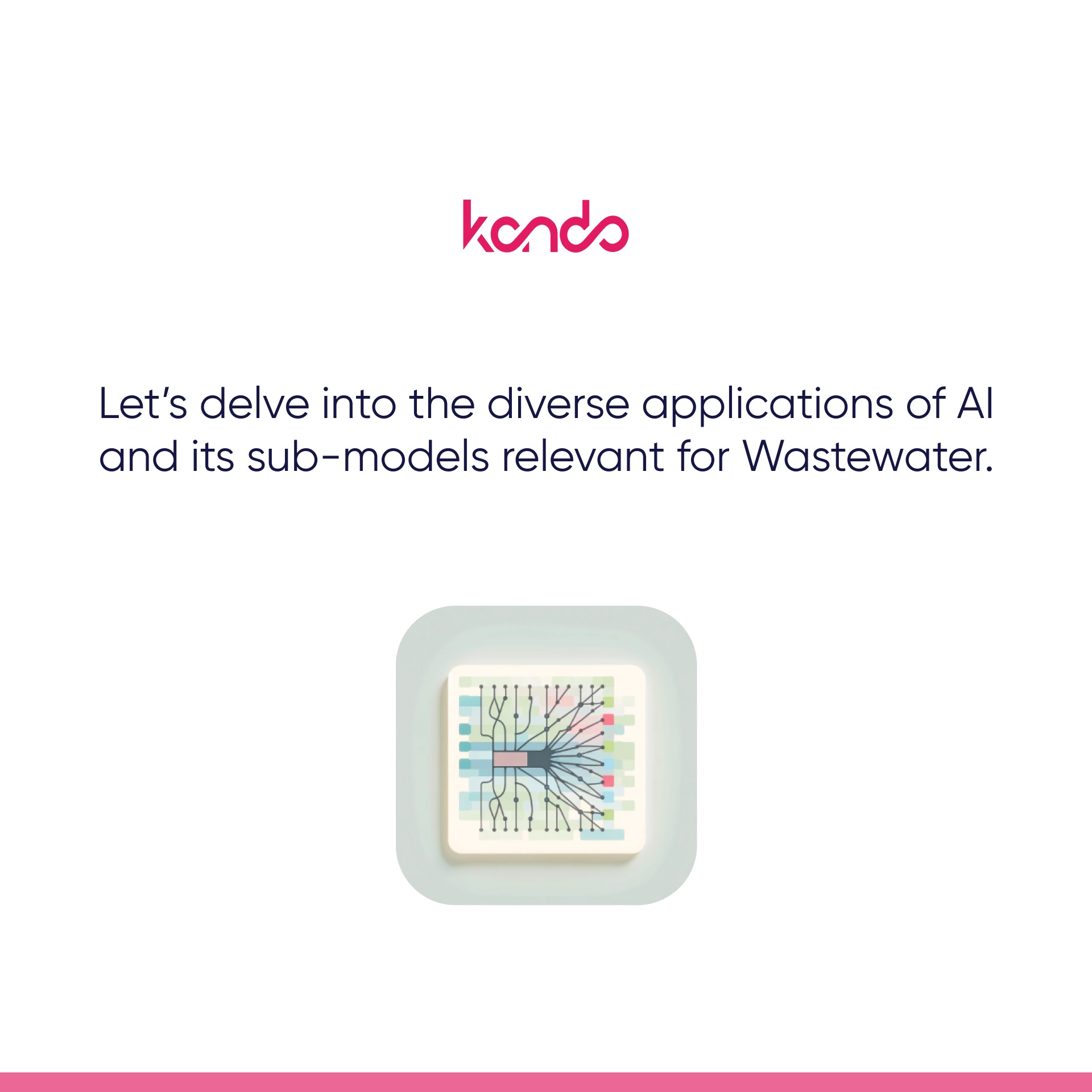Admin
May 15, 2024
Leveraging AI and ML for Advanced Data Processing and Analysis in Wastewater Management

Leveraging AI and ML for Advanced Data Processing and Analysis in Wastewater Management

In the evolving field of wastewater management, the integration of Artificial Intelligence (AI) and Machine Learning (ML) is starting to make waves, and revolutionizing the mindsets on how utilities can operate. The utilization of these automated software models offers significant benefits, but it also requires careful preparation to ensure success and smooth adoption of such projects with an organization. There are many steps before an actual deployment that must be considered, such as prioritizing the problems it needs to solve, objectives and aligning the different departments and its data infrastructure. When this is done, AI and ML can start to be utilized in various applications within the organization itself. Notable examples of these are asset management, data analytics, OPEX optimization, infrastructure management, wastewater quality, customer service, PR, and flow management. Although aligning all elements can be time-consuming, the process ultimately simplifies automating statistical methods—a concept famously referenced by Elon Musk. Although it must be mentioned that without good data quality such automation will not be successful, and only then can we appreciate such power and simplicity of statistics.
This article will discuss some of the technical aspects of these AI applications and how they can enhance operational and communication processes through various applications within a wastewater organization. By utilizing these data insights, it can help time-consuming decision-making while optimizing the utilities and our daily activities.
Before we delve into the specifics, I always like to start with a basic understanding of AI and ML technologies,
and we will build from there.
Artificial Intelligence (AI)
AI encompasses a broad range of computer science applications designed to simulate intelligent behavior in machines, allowing them to perform tasks that typically require human intelligence. These tasks include problem-solving, pattern recognition, and language understanding. The primary goal of AI is to create systems capable of functioning independently and intelligently.
On the other hand, ML is a subset of AI focusing on the concept that machines can learn from data, identify patterns, and make decisions with minimal human intervention. It involves algorithms that enable computers to learn from past data, crucial for improving the accuracy and efficiency of AI systems over time. While AI aims to create intelligence, ML facilitates the learning process that allows AI to adapt and enhance its capabilities.
Machine Learning (ML)
ML algorithms take over from the AI in the subsequent stages, where it applies its pre-set models for anomaly detection and pattern recognition techniques. These techniques are essential for monitoring live sensor data, weather data, and whatever else you can think of! By analyzing historical and real-time datasets, ML models can pinpoint anomalies and predict potential issues such as contamination incidents, leaks, overflows, and thereby improving the response strategies of the operations team for operational efficiency or even infrastructure failure.
Then we also have the buzzword of the year, which is another subset but then of ML, LLM (Large Language Models). These models are the next step of the digital revolution that is currently unfolding with products like ChatGPT and Gemini. I think everyone hopefully has heard of it by now and should start using it (yes this is an encouragement) to their advantage. I will not lie; I have used it for this piece, and it has helped me check grammar or structure the article.
Large Language Models (LLM)
LLMs are a specialized subset of machine learning models that have made significant advances in language processing. Trained on substantial amounts of text data, LLMs can generate human-quality text, translate languages, write several types of creative content, and provide informative answers to questions. Their ability to understand and generate human language with report insights has broad implications for enhancing AI applications across different sectors, including environmental management or in general any organizational management of a utility.
So, how do we integrate the data and generate insights from it? Well, I wish I had an easy answer for you, but it is quite an undertaking. However, I have broken it down in four steps.
1) The first step after defining the objective you would like it to address or solve, is the preparation in gathering and prepping the data quality.
2) The second step will look at Pre-Training the model (Optional), where you start with a large, pre-trained LLM (like GPT-4o) and should fine-tune the model with your domain-specific data.
3) The third step is to train the LLM, where you can choose a training platform (cloud-based or local servers) and select a training approach (supervised or unsupervised).
4) The fourth step is to evaluate and refine, where we define clear success metrics. After this definition, we review the LLM outputs with selected experts and evaluate and if necessary, adjust training data, parameters, and finally re-train to continuously improve the model
5) and the last step is to ensure that we have enough dedicated data scientists, software engineers and other key stakeholders from the organization to enable it, put it into practice, and guide its adoption process.
LLM Application
Now that is all great, but how does that relate to the applications of LLMs in Wastewater Management? Well, the potential applications of LLMs in wastewater management are vast and impactful. You can think of many applications, and I will shout out a few.
- Public Sentiment Monitoring can analyze social media to detect shifts in public sentiment, enabling utilities to respond proactively to concerns or reinforce positive behaviors. This could help the communications team signal high-risk areas to the director, and their collections system operations team to help improve specific areas in need.
- Second, we can easily personalize communication for specific stakeholders, addressing unique concerns or compliance issues or information requested by its clients for school projects (which will eventually help stimulate its workforce, a few years down the road).
- Third, it could be utilized for Pollution Source Tracking, where it identifies patterns and pinpoints pollution sources, facilitating faster and targeted remediation or help with predictive maintenance (which will also help improve the public sentiment and image), as we can predict potential failures, allowing for proactive maintenance and minimizing downtime.
I can keep going like this, but also would like to leave some to your imagination. This whole story, and I hope that it kept you on the edge of your seat, demonstrates that the integration of AI and ML, particularly LLMs, in wastewater management not only transforms data processing and analysis but also has the potential to enhance operational and environmental decision-making, and most importantly, makes our lives easier when done properly. Work smarter, not harder, as I like to say.
As these technologies continue to evolve, their role in advancing wastewater management systems is increasingly becoming indispensable, ensuring a future where utility management is as dynamic and intelligent as the technologies that support it, while still providing top notch services and high-quality water to our end-client; the community and its environment.
Did this article raise some questions, and if yes it did, that totally makes me smile. I do hope you reach out, as I would love to exchange additional ideas on the endless possibilities of adopting AI solutions within the wastewater industry or even beyond.
Ori.reshef@kando.eco
Chief Solution Officer at Kando

Your wastewater contains the data.
We just need to extract it so that you can optimize your operations.
Contact us and a member of our team will get back to you as soon as possible.



